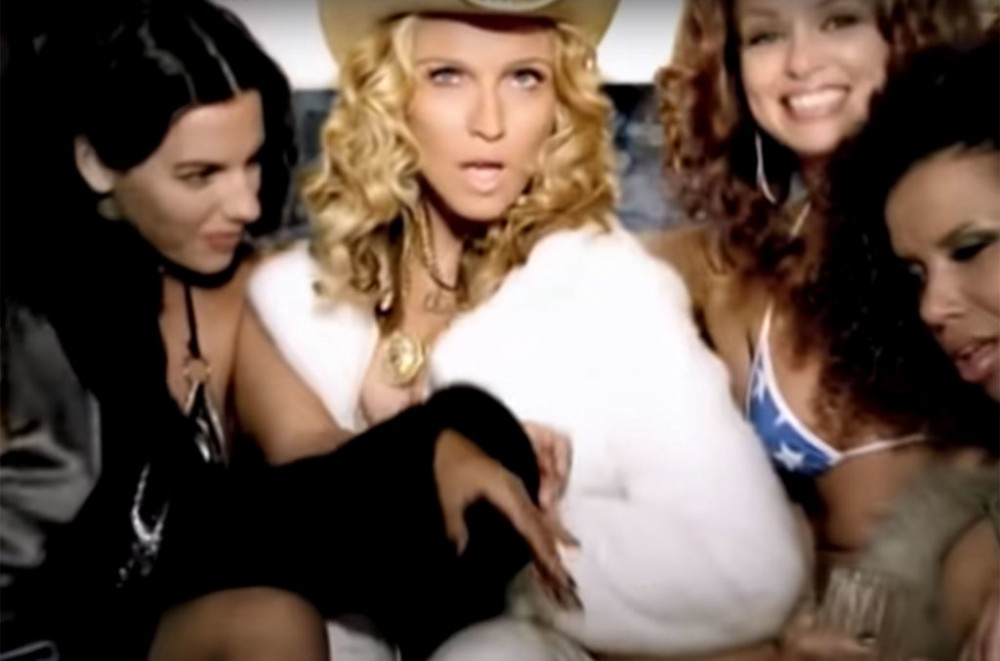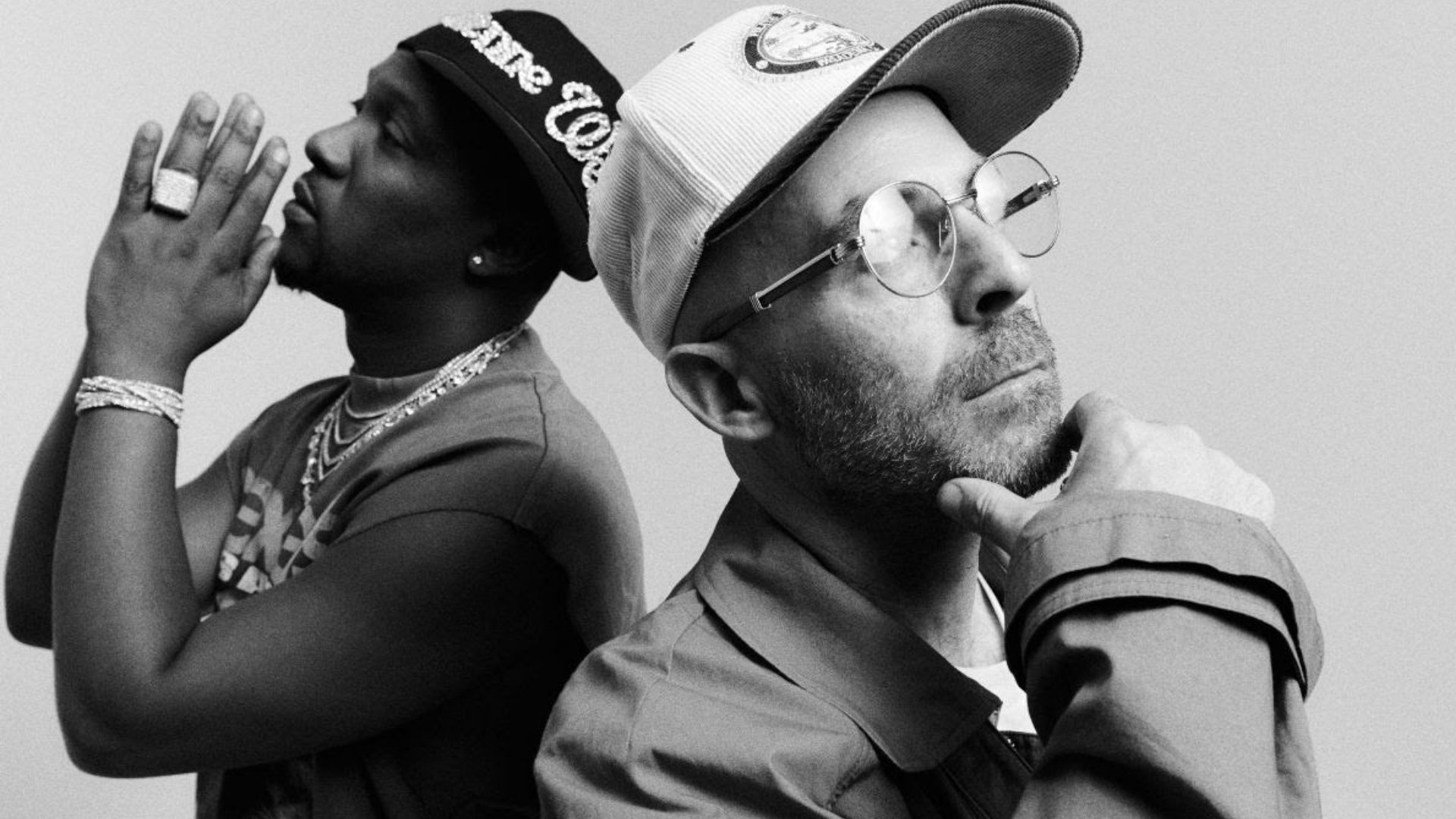Following our Billboard staff-picked list of the 100 greatest songs of 2000, we’re writing this week about some of the stories and trends that defined the year for us. Here, we look back at the way Madonna, arguably the most iconic pop star of the ’80s and ’90s, entered her third decade: with an album that pushed both music and her own songwriting into new and unexpected places.
The year 2000 was a good time to be Madonna. Through the ups and downs of the ’90s, she’d followed the musical standard she’d set on 1989’s Like a Prayer, extending her range as a singles artist into a more personal, album-driven format. The birth of Lourdes Leon, her first child, sparked the creation of 1998’s Ray of Light — still her most critically acclaimed album, which led to her first four Grammy Awards all at once the next year.
But most importantly, Madonna’s influence on the next generation of musicians had begun to manifest. Maverick Records, her imprint under Time Warner, was in full swing, releasing albums by acts as big as Alanis Morissette, Marilyn Manson, and The Prodigy. In the mid-’90s, the Spice Girls had kicked off a new wave of teen pop, branding pop-feminism as Girl Power, and the likes of Britney, Christina, and Destiny’s Child were now taking up the reins in America. These were self-possessed, ambitious young women who knew their potential, singing over dance beats and R&B grooves, not guitars — all of whom looked up to Madonna, whether she liked it or not. In 2000, she said to Rolling Stone (with an apparent eye roll), “I’ve been told that I have inspired Christina Aguilera and Britney Spears. So maybe it’s not so strange that I could be in the mix of them. I’m not sure.”
Seventeen years after her self-titled debut album, Madonna had come full circle. Enough time had passed that even her biggest skeptics had to concede to her body of work, but she remained a driving force within popular culture. Into the new millennium emerged her eighth studio album Music — a concise title that would come to speak volumes. Though the album cover (along with the subsequent “Don’t Tell Me” video) suggested a cowgirl reinvention, Music was in fact a globalist, Warholian pop-art take on Americana — largely recorded in London, with exclusively British and French collaborators.
But half a year before Music, in March 2000, came a red herring — a cover of Don McLean’s “American Pie.” At the behest of her co-star Rupert Everett, Madonna recorded her version for the soundtrack to their film The Next Best Thing, a romantic dramedy from Midnight Cowboy director John Schlesinger. The film was critically panned and soon faded from memory, but “American Pie” — released as a single the same day — became a polarizing global hit.
As an unapologetically pop interpretation of one of the defining symbols of baby boomer nostalgia, many considered it sacrilege. Ironically, the most positive review came from Don McLean himself, who called Madonna’s version “sensual and mystical… a gift from a goddess.” Produced by William Orbit, her lead collaborator on Ray of Light and “Beautiful Stranger” (her psychedelic 1999 single from the second Austin Powers soundtrack), the “American Pie” track is colorful, almost gaudy — the theremin-like synths and marching snares threaten to tip over into kitsch.
Madonna’s voice sounds richer than usual, yet the song’s allegorical lyrics, so tied to Don McLean’s memories of the late ’50s and ’60s, simply don’t carry the same weight coming from her. Ultimately, Madonna’s “American Pie” was a similar sentiment dressed up in pop clothes — and arguably, a less radical reinterpretation than “Weird Al” Yankovic’s “The Saga Begins,” his Phantom Menace parody released the year prior.
In the music video, Madonna seemingly becomes an avatar for America itself. Between shots of her dancing in front of the flag, she showcases a diverse cast of working-class, queer, ordinary Americans. “American Pie” was unusually patriotic and nostalgic, two words rarely associated with Madonna. At the behest of a record executive, it was a bonus track on international editions of Music — a decision she’d later regret. Don McLean’s recording, and many listeners’ relationship with it, was simply bigger than Madonna herself.
Like it or hate it, the inescapability of “American Pie” only increased the anticipation for Madonna’s next reinvention. When the Music campaign began in earnest, the domino effect was immediate. On August 11, 2000, Madonna gave birth to Rocco — her second child, and first with director Guy Ritchie. Five days later, she turned 42; a week after that, an unfinished version of the album leaked on Napster — and she released the single and video for “Music,” debuting her new sound with producer Mirwais Ahmadzaï.
A journeyman musician in his native France since 1978, Mirwais’ influences were unlike anything in mainstream American pop at the time. “Music” was a blunt, escapist dance track, but its hyper-intelligent production was just as obvious — looking back towards Kraftwerk, and to the future of what would become electroclash. Mirwais’ sonic palette is all extremes: razor-sharp treble hi-hats, sawtooth synths, and enormous sub bass, not so much complementing each other as fighting for prominence.
Madonna had long been considered the postmodern pop star, following in the footsteps of David Bowie. “Music” defined her ethos anew: to unify the cutting-edge underground with the world of pop. “Music makes the people come together/ Music makes the bourgeoisie and the rebel!” She wasn’t just telling the listener to get up and dance, but offering a winking cultural commentary too. Singing through a vocoder, she asks, “Do you like to boogie-woogie?/ Do you like my acid rock?” — as if daring you to disagree.
The video, directed by Jonas Åkerlund, casted Madonna as a kind of hip-hop mack-daddy, with Ali G her feckless limo driver. It was simultaneously low and high-concept, fusing ’70s disco aesthetics with psychedelic animation — vibrant enough to appeal to kids, jaded gen X-ers and longtime fans alike. “Music” became Madonna’s final song to date to top the Billboard Hot 100, though it was far from her last pop hit. At both the MTV Europe Music Awards and the Grammys, she performed the song in front of a montage of her past music videos, yet without a hint of nostalgia, singing “Don’t think of yesterday, and I don’t look at the clock…”
Madonna was never one to repeat herself, but especially not after Ray of Light’s most direct musical successor arrived through another source: All Saints’ “Pure Shores,” a dreamy William Orbit production that, earlier in 2000, was a megahit seemingly everywhere but the U.S. Though Madonna was reportedly displeased that she hadn’t recorded the song herself, she continued to work with Orbit, but largely forged ahead with Mirwais as her lead collaborator.
Music’s stakes feel much lower than Ray of Light. The mood is more relaxed, playful, yet Madonna had plenty to prove. Track two, “Impressive Instant,” followed “Music” with her weirdest sonic excursion ever — a psych-rock take on electro house with lyrics like “I like to singy, singy, singy/ Like a bird on a wingy, wingy, wingy.” Absurd, yet strangely moving, “Impressive Instant” was the first song Madonna and Mirwais worked on — it alone was enough to justify their partnership.
Music is alternately restless and contemplative. “Nobody’s Perfect” is an apology largely sung through auto-tune, predating Kanye West’s 808s & Heartbreak. “Paradise (Not for Me),” inspired by Édith Piaf, is a haunting lament for lost loves and memories. But the album’s true emotional core is “I Deserve It.” Over Neil Young-like acoustic guitars and sparkling synths, Madonna confesses that she might finally have found unconditional love. “I Deserve It” couldn’t be further from the likes of “True Blue” or “Cherish,” but more than any other song, it shows how she’s matured — not as a star, but a human. Those moments of vulnerability put not just the rest of the album, but her whole career into perspective.
Curiously, the album’s William Orbit co-writes are the weakest of the bunch. “Amazing” and “Runaway Lover” flow too smoothly, like water, next to Mirwais’ jagged, alien soundscapes. There’s a sense that she’s not pushing herself as hard, still in her Ray of Light comfort zone.
Perhaps no producer has challenged Madonna more than Mirwais on “Don’t Tell Me,” which was released as the second single on November 21, the day before Madonna’s wedding to Guy Ritchie. “Don’t Tell Me” takes one kitschy genre — country-pop guitar twang, as depicted in its video — and filters it through Mirwais’ glitchy IDM programming. It’s the rare pop hit that’s danceable, yet constantly throwing rhythmic curveballs, spinning off-balance. Dig deeper, and the lyrics read more like a Zen koan than anything in pop: “Tell the bed not to lay/ Like the open mouth of a grave, yeah/ Not to stare up at me/ Like a calf down on its knees.”
Those words came from a demo of the song “Stop” by Joe Henry — Madonna’s brother-in-law, and a cult Americana singer-songwriter in his own right. Most importantly, Madonna’s overlapping lead vocals are naked, free of any reverb — a choice Mirwais called “the most important thing that we did to her voice on the album.” “Don’t Tell Me” is as catchy as it is inscrutable, a three-way collaboration that seemingly transcends time and space itself.
“What It Feels Like for a Girl” was an immediate highlight, yet it took a strange path to becoming the album’s third single. On the album, it was beautifully melodic, yet unsettled — the album’s lone co-write with Guy Sigsworth, frequent Björk and Imogen Heap collaborator. “Girl” was as openly feminist as “Express Yourself,” but introspective, articulating the complexities of modern womanhood on an intuitive, spiritual level (“Good little girls, they never show it/ When you open up your mouth to speak/ Could you be a little weak?”).
In early 2001, it was released as the album’s final single and music video; Madonna’s first collaboration with Guy Ritchie. Instead of the album version, Above & Beyond’s upbeat trance remix — which reduced the song to no more than its opening Charlotte Gainsbourg sample and chorus – was used instead. In the video, infamously banned by MTV and VH1, Madonna and an elderly female companion commit grand theft auto and robbery on male bystanders, before ramming their stolen car into a street pole.
Ritchie’s signature style is thrilling and frenetic, but too blunt for its own good — the ironic, female-empowerment-through-violence concept doesn’t fully translate. Still, taken together, Music’s three singles formed a perfect triptych of Madonna’s career. “Music” — postmodern, escapist dance-pop; “Don’t Tell Me” — high/lowbrow pop kitsch; “What It Feels Like for a Girl” — defiant, vulnerable feminism.
Like Ray of Light, Music found broad critical acclaim upon its release, and was even voted number 452 on Rolling Stone’s original Greatest Albums of All Time list. It seemed to be Madonna’s definitive artistic statement for the new millennium — but in the years since, it’s become equally fascinating for all the ways in which it didn’t point the way forward for her.
In 2000, the winds seemed to be blowing in Madonna’s favor. By 2003, they were not. As both American and worldwide politics took a darker turn, she recorded American Life — a direct continuation of Music’s palette with Mirwais, but a complete 180 in its combative stance towards pop culture and music. She hit reset with 2005’s blockbuster Confessions on a Dance Floor, but never recaptured Music’s experimental spirit… until last year’s Madame X, which reunited her with both Mirwais and her curious, globalist muse.
The early new millennium was a time of flux. The dominant sounds of ’90s pop culture — teen pop, R&B, hip-hop, country-pop, electronica, alternative rock — had all come of age, and were colliding in new and unfamiliar configurations. Music, inspired by both the underground and the mainstream, existed between the two, impossible to pin down to any one movement.
In 2020, Music now marks the halfway point of Madonna’s career. It’s arguably one of her best albums, yet rarely the first one fans or casual listeners reach for. But it’s to her, and Mirwais’ credit, that Music still feels like recent history. It’ll be remembered not just for the cowgirl outfits and choreography, but its restless, adventurous spirit, looking backwards and ahead to find a sense of belonging in the present.



